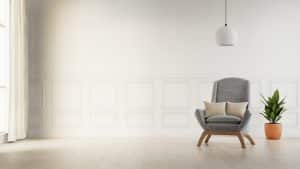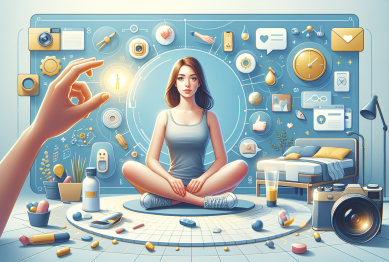Curious about how minimalism could change your routines, spaces, and well-being? This guide reveals how adopting minimalist principles can help create peace at home, reduce stress, and boost satisfaction in everyday life.

Understanding Why Minimalism Attracts So Many
Minimalism has evolved beyond a buzzword into a lifestyle with global appeal. It means intentionally choosing less—paring down belongings and commitments to create a sense of freedom. Many are drawn to minimalism because it promises more time, money, and focus for what truly matters. The minimalism movement, often linked with mindfulness, challenges the conventional idea that happiness comes from accumulating possessions. People notice that clutter and excess often lead to distraction and stress, while a streamlined environment fosters clarity. Some say embracing minimalism improves mental health by freeing up mental and physical space, which can enhance overall well-being.
In urban centers, minimalist living is particularly appealing. Apartments are getting smaller and daily lives busier. Minimalism encourages people to focus on quality over quantity—selecting a few items that spark joy while letting go of the unnecessary. This approach reduces decision fatigue, making everyday choices less overwhelming. Instead of being weighed down by too many things or too many options, advocates find new lightness. Decisions become effortless, and priorities come into sharper focus. The allure isn’t about living with nothing, but about living with enough. Modern minimalists find freedom in owning less and doing more of what brings purpose to their lives.
Minimalism finds its home in art, design, and culture as well. Clean lines, calm spaces, and neutral colors are the hallmarks of minimalist interior design. The visual simplicity of minimalist art creates a feeling of peace for many. Color palettes often stick to whites, grays, and earth tones. Minimalist architecture features uncluttered layouts that highlight light and space, reflecting the guiding principle: every object has a purpose. This approach isn’t about deprivation—it’s about intentionality. When every item is chosen thoughtfully, a sense of gratitude often emerges. The minimalist lifestyle supports emotional well-being and sustainable living, benefiting those who try it for themselves (Source: https://positivepsychology.com/benefits-minimalist-lifestyle/).
Decluttering: How to Start When Everything Feels Urgent
One major challenge in adopting a minimalistic lifestyle is knowing where to begin. Many struggle with letting go, especially when objects have sentimental value. Experts suggest starting small—perhaps a single drawer or shelf. The ‘one-in, one-out’ rule helps some people maintain balance. For every new item brought in, another is passed on. This keeps clutter in check and makes acquisition a more mindful process. Organizing things by use and necessity, and donating what’s not needed, can foster a positive relationship with one’s space. It’s common to feel emotional or anxious during this process, but these feelings often subside as spaces become lighter and more functional.
Emotional attachment is a natural obstacle. Items represent milestones, memories, or loved ones. However, minimalism doesn’t demand erasing history. Instead, it encourages focusing on the present and future. Some people photograph sentimental objects before letting them go, keeping the memory while freeing up physical space. Decluttering also brings unexpected benefits: closets become easier to manage, cleaning takes less time, and lost items rarely occur. The environment grows calmer as visual overwhelm disappears. Minimalists report feeling more energetic and focused in streamlined spaces. Letting go allows room for what’s most meaningful to come forward, whether that’s a hobby, personal project, or simple relaxation.
Popular media has amplified interest in decluttering through TV shows, books, and online communities. Techniques like the KonMari method ask whether each possession sparks joy. This approach offers a gentle framework for making tough decisions. Sustainability plays a role, too: giving items a second life through donation or recycling benefits others and minimizes environmental impact. Reducing consumption also aligns with growing environmental consciousness. As more people share their before-and-after stories, the ripple effect encourages others to consider the impact of excessive consumption on both their happiness and the planet (Source: https://www.sierraclub.org/sierra/2018-4-july-august/feature/spirituality-stuff).
Minimalist Design for Everyday Comfort
Design plays a crucial role in the minimalist lifestyle, influencing both function and mood. Minimalist interiors prioritize open spaces, functional furniture, and the absence of visible clutter. By carefully choosing pieces that serve multiple purposes, such as a foldaway desk or storage ottoman, it becomes possible to live comfortably with fewer things. This thoughtful use of space suits both small apartments and larger homes, especially as more people work from home. Natural light, calming colors, and breathable spaces support a peaceful atmosphere. It’s about reducing visual noise so the mind can relax and focus on what matters most.
Minimalist design extends to accessories and artwork, which tend to be simple and neutral. Instead of crowding walls with photos and knickknacks, a single piece of art or a favorite object becomes a focal point. This prevents spaces from feeling chaotic and allows residents to notice and appreciate what is truly beautiful and meaningful. Designers encourage the use of textures, such as wood, linen, and stone, to add warmth without clutter. Plants are also common, offering a natural touch without overwhelming the senses. The goal is not emptiness, but intentional comfort—transforming a room into a sanctuary for reflection, creativity, and rest.
The benefits reach well beyond aesthetics. Studies reveal that minimalist environments can help reduce anxiety and promote well-being. Uncluttered spaces make cleaning easy and decrease the amount of time spent on maintenance. Efficient use of space can also lower the cost of living, as fewer possessions mean less need for storage solutions and fewer expenses overall. Many who switch to minimalist design report feeling less stressed and more focused, attributing these benefits to their surroundings. Minimalism, in design and life, isn’t about following strict rules. It’s about making spaces work for the people who use them (Source: https://www.ncbi.nlm.nih.gov/pmc/articles/PMC6977590/).
Minimalism in Fashion and Personal Style
Minimalism offers fresh perspectives in fashion, too. Capsule wardrobes, built from a limited number of versatile pieces, are trending in style circles. The idea is to curate a collection where every item pairs easily with others, reducing decision fatigue each morning. Neutral colors and timeless silhouettes dominate minimalist closets. This approach is both sustainable and economical. Some fashion enthusiasts even adopt seasonal capsule swaps, rotating clothing items to keep things updated and relevant while limiting overall quantity. Minimalism lets personal style shine through simplicity, creating a signature look that feels authentic and easy to manage.
Reducing wardrobe clutter has ripple effects on confidence and creativity. With fewer options, decision-making becomes faster. The outfit selection process feels less overwhelming, giving people more headspace for other pursuits. Well-curated closets feature comfortable and high-quality garments over fleeting trends. Many find that having fewer clothes encourages investment in ethically made, long-lasting pieces, contributing to both self-expression and environmental responsibility. Minimalist fashion proves that style doesn’t require abundance. It highlights how intentional choices can be empowering, sustainable, and freeing.
With fashion waste becoming a global concern, minimalism challenges overconsumption and fast fashion. Donating, swapping, or upcycling clothes brings environmental and social benefits, while also reducing the complexity of daily choices. Online resources provide guidance on building capsules, mixing and matching, and identifying key essentials. The simplicity cultivated by a minimalist wardrobe offers peace of mind and eliminates daily clutter, both physical and mental. Many who try this approach find more satisfaction in their choices, enjoying fashion as a celebration of individuality and thoughtfulness (Source: https://goodonyou.eco/why-minimalism-fashion-works/).
The Surprising Benefits of Less
At its core, minimalism isn’t just about decluttering—it’s about making room for what matters. By prioritizing relationships, passions, and self-care over material goods, people often discover a new sense of clarity. Fewer distractions mean more time for meaningful experiences, whether it’s cooking with family, pursuing hobbies, or simply enjoying a walk outside. Research shows that having fewer possessions can reduce anxiety and increase satisfaction, allowing people to build deeper connections with themselves and their loved ones. Minimalism becomes more than an aesthetic; it’s a pathway to intentional living.
Minimalist lifestyles often promote financial wellness. Spend less, save more—that’s the principle many follow. Reduced consumption leads to increased savings, which can be channeled toward experiences or long-term goals instead of short-lived trends. The process of choosing, purchasing, and organizing is simplified, making room for better budgeting habits. Minimalists frequently report feeling less pressure to keep up with societal expectations. By focusing on gratitude and contentment, the need for comparison fades away. Peace of mind, for many, is the most transformative benefit of all.
One often-overlooked aspect is the impact on sustainability. Consuming less directly reduces waste, conserves resources, and limits one’s ecological footprint. Whether that means buying fewer household goods, reducing plastic use, or opting out of fast fashion, the advantages add up. Communities worldwide are embracing group swaps, sharing economies, and secondhand markets as ways to bring minimalism into daily routines. These shifts reflect a wider movement toward responsibility—caring not just for one’s immediate circle, but for future generations as well (Source: https://www.epa.gov/recycle/reducing-waste-what-you-can-do).
Making Minimalism Personal and Sustainable
Minimalism is deeply personal—what works for one person may not suit another. Some embrace strict rules, while others opt for gentle, flexible routines. Experts suggest starting with small experiments. Try decluttering one space, simplifying one wardrobe, or reducing digital intake for a week. Reflect on how the changes feel and adapt as necessary. Journaling the journey can reveal unexpected joys and difficulties. Growth happens gradually, and setbacks are part of the process. Minimalism isn’t an endpoint, but an evolving relationship with what matters most.
Support networks can make all the difference. Online communities, local meetups, and social media groups inspire accountability and new ideas. Sharing before-and-after photos, celebrating milestones, and discussing setbacks foster encouragement. It’s easier to maintain minimalist habits when others are on a similar journey. Minimalism also works best when it feels inclusive—every family member or roommate can contribute ideas about what stays or goes. Collaboration reinforces the sense that these changes are beneficial, not burdensome.
Minimalism naturally leads to more conscious consumerism. Before buying anything new, ask: Does this add value to my daily life? This filter helps limit impulse spending and encourages more thoughtful decisions. With time, many find themselves yearning less for more and appreciating what they have. The process fosters self-awareness and resilience against materialism. As priorities shift, life feels fuller, even with less. Minimalism is not about perfection, but about progress—each step brings new insight and empowerment (Source: https://greatergood.berkeley.edu/article/item/how_minimalism_can_improve_your_life).
References
1. PositivePsychology.com. (n.d.). 15 Benefits of a Minimalist Lifestyle: Simplicity & Mindfulness. Retrieved from https://positivepsychology.com/benefits-minimalist-lifestyle/
2. Sierra Club. (2018). The Spirituality of Stuff. Retrieved from https://www.sierraclub.org/sierra/2018-4-july-august/feature/spirituality-stuff
3. National Institutes of Health. (2020). The Influence of the Home Environment on Health. Retrieved from https://www.ncbi.nlm.nih.gov/pmc/articles/PMC6977590/
4. Good On You. (n.d.). Why Minimalism in Fashion Works. Retrieved from https://goodonyou.eco/why-minimalism-fashion-works/
5. U.S. Environmental Protection Agency. (n.d.). Reducing Waste: What You Can Do. Retrieved from https://www.epa.gov/recycle/reducing-waste-what-you-can-do
6. Greater Good Magazine. (n.d.). How Minimalism Can Improve Your Life. Retrieved from https://greatergood.berkeley.edu/article/item/how_minimalism_can_improve_your_life









